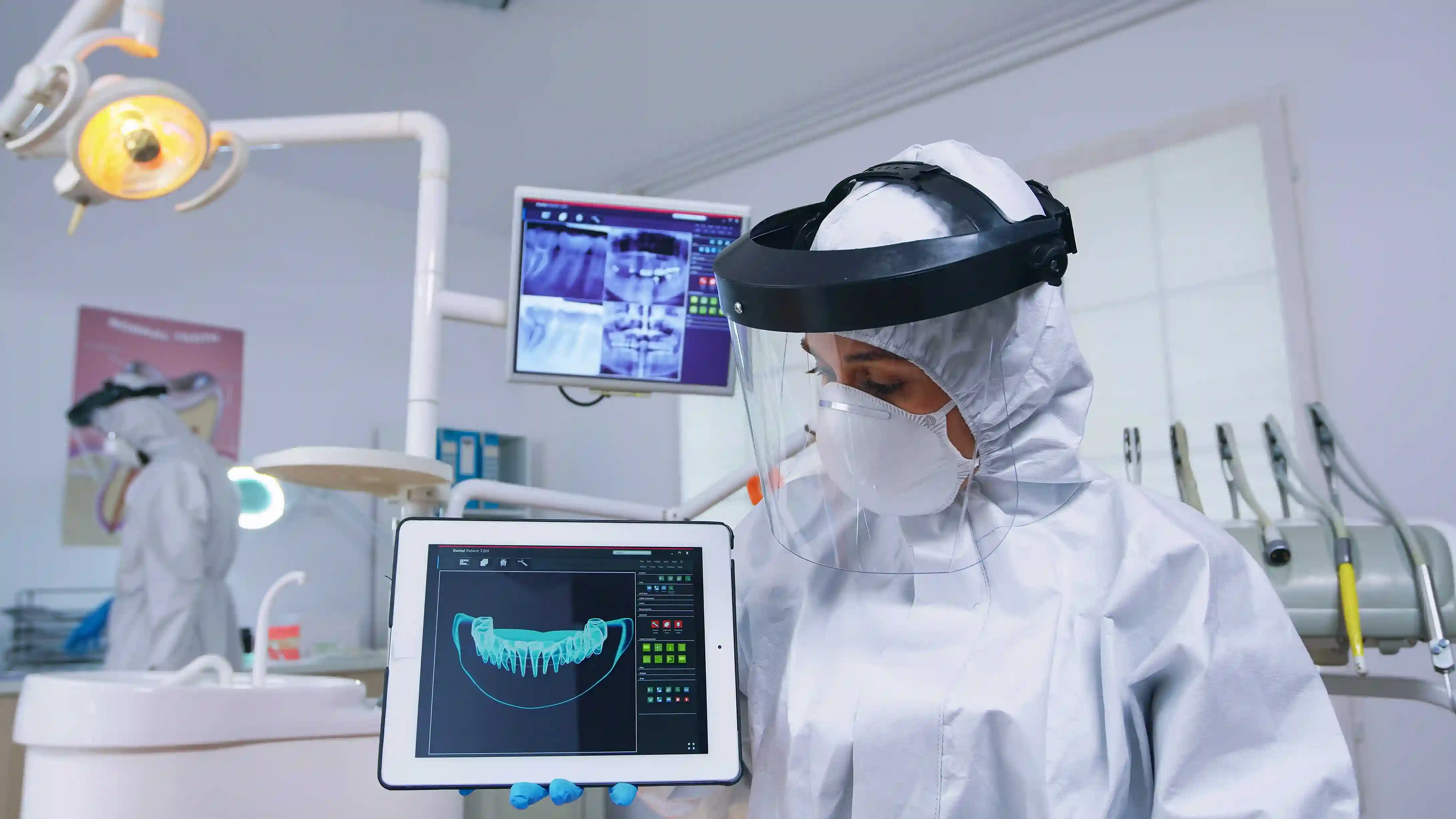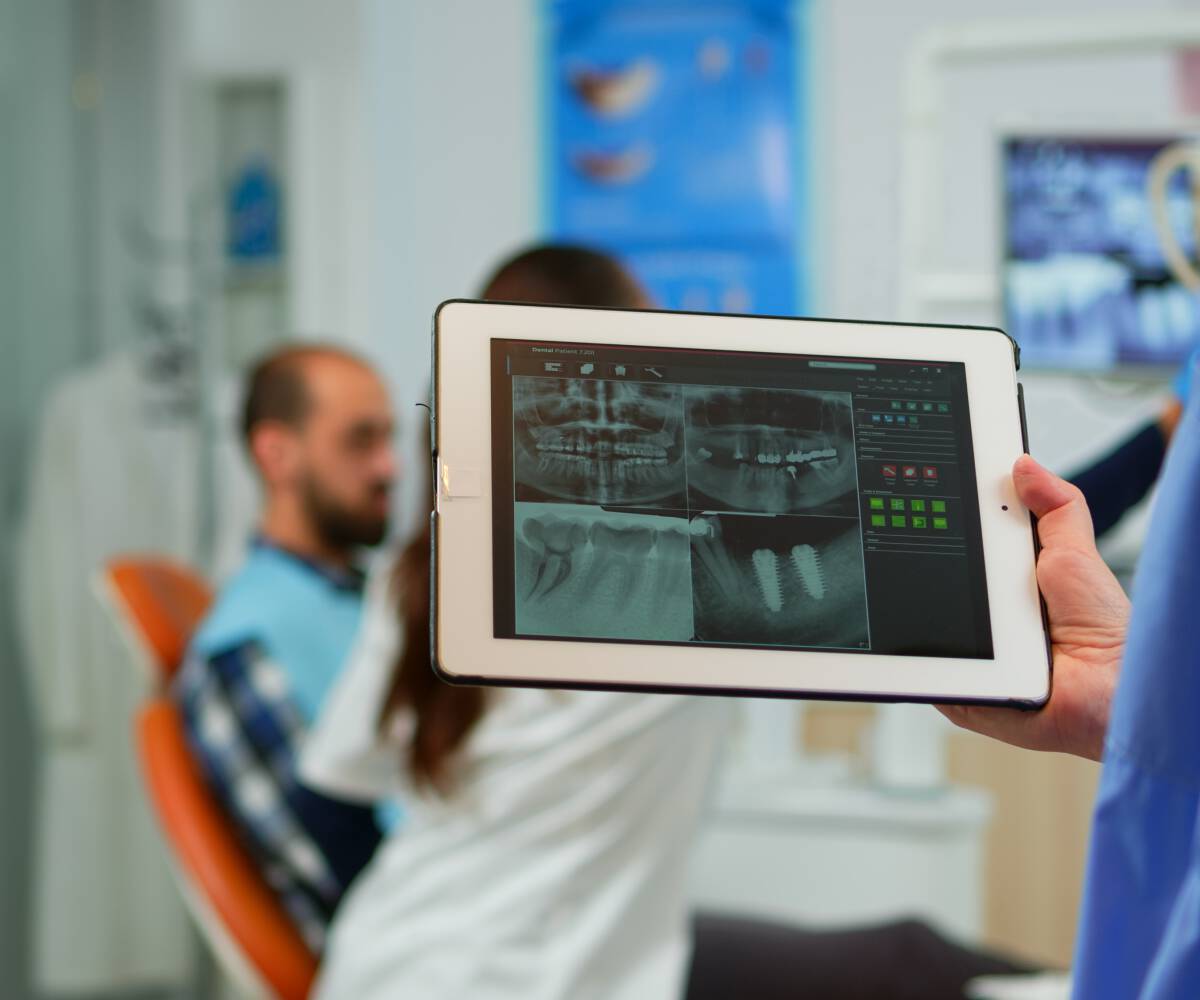Revolutionizing Dental Health with Digital Dentistry Solutions: A Comprehensive Guide Introduction
Rapidly evolving digital solutions in dentistry are transforming how dentists diagnose, treat, and interact with patients. Digital dentistry solutions not only enhance the precision of dental procedures but also significantly improve patient experiences. This guide will explore various aspects of digital dentistry, the technologies used, and the future of dental care.
1. Introduction to Digital Dentistry Solutions
Digital dentistry refers to the integration of digital technology into dental practice. This includes the use of digital imaging, computer-aided design and manufacturing (CAD/CAM), and artificial intelligence to streamline and enhance dental care. The transition from traditional methods to digital solutions provides greater precision and efficiency, benefiting both practitioners and patients.
2. The Evolution of Dental Technologies
The journey of dental technologies is quite remarkable. From the introduction of X-rays to the emergence of digital imaging and CAD/CAM systems, each innovation has played a significant role in advancing dental practice. The integration of digital solutions marks a new era in dentistry characterized by enhanced capabilities and improved patient outcomes.
3. Key Digital Techniques in Modern Dentistry
Various digital techniques essential to modern dentistry include:
• CBCT (Cone Beam Computed Tomography): Provides 3D images of dental structures, crucial for accurate diagnosis and treatment planning.
• Panoramic Imaging: Offers a broad view of the mouth and jaw, aiding in the assessment of dental and skeletal structures.
• CAD/CAM Systems: Facilitate the design and production of dental restorations (such as crowns and bridges) directly in practice.
• 3D Printers: Enable the creation of dental models and custom tools with high precision.
• Intraoral Scanners: Capture detailed images of teeth and gums, enhancing accuracy in impressions and treatment planning.

4. The Role of Artificial Intelligence in Digital Dentistry Solutions
Artificial intelligence is revolutionizing digital dentistry by providing tools that enhance diagnostic capabilities and treatment planning. AI algorithms can assist in detecting anomalies, predicting treatment outcomes, and even generating personalized treatment plans. This leads to more informed decision-making and improved patient care.
5. Benefits of Digital Dentistry in Clinics
Digital dentistry solutions offer numerous benefits to clinics:
• Increased Efficiency: Digital tools streamline workflows by reducing diagnosis and treatment times.
• Enhanced Accuracy: Advanced imaging and design technologies provide higher precision in procedures.
• Improved Patient Communication: Digital visuals help clinicians explain treatment options more effectively to their patients.
6. Improving Patient Care with Digital Dentistry
Digital dentistry benefits patients by reducing discomfort, shortening treatment times, and enhancing outcomes. Digital imaging technologies minimize the need for traditional molds and impressions, providing a more comfortable experience. Additionally, the ability to visualize treatment plans fosters trust and interaction between patients and healthcare providers.
7. Advanced Imaging Techniques: CBCT and Panoramic Solutions
CBCT imaging provides essential three-dimensional views for accurate diagnosis and treatment planning. It allows practitioners to gain detailed insights into the jaw, teeth, and surrounding structures. Panoramic imaging offers a comprehensive overview, facilitating the identification of issues in the dental arch. Both techniques are fundamental in modern diagnostic applications.
8. The Impact of Digital Dentistry on Implantology
Digital solutions have significantly advanced implantology. With precise imaging and planning tools, dentists can perform implant surgeries with higher accuracy, increasing success rates. Digital dentistry solutions facilitate the creation of custom implant guides, ensuring optimal placement and alignment.
9. The Role of 3D Printing in Modern Dentistry
3D printing is transforming dentistry by enabling the rapid production of dental models, prosthetics, and custom devices. This technology not only reduces manufacturing time but also minimizes material waste, providing cost-effective solutions. 3D printing allows dentists to offer personalized treatments that cater to individual patient needs.
_batcheditor_fotor_fkbve5f_batcheditor_fotor_11zon_gr1oeLG.webp)
10. Digital Dentistry in Educational Applications
Digital dentistry solutions play a significant role in dental education. The integration of advanced imaging and AI technologies into the curriculum allows educators to provide students with practical experience in interpreting digital images and modern treatment planning. This prepares future dentists to effectively utilize digital tools.
11. The Future of Digital Dentistry: What to Expect
The future of digital dentistry promises more innovation, including advanced AI capabilities, improved imaging technologies, and the integration of virtual reality in treatment planning. As technology evolves, dentists will have access to more sophisticated tools to enhance patient care.
12. Challenges in Adopting Digital Dentistry Solutions
Although the benefits of digital dentistry are clear, challenges in widespread adoption remain. Factors such as cost, training requirements, and resistance to change can hinder the implementation of digital solutions. However, addressing these challenges through education and investment is critical for the future of the dental profession.
13. Digital Dentistry in Private Practice vs. Institutional Use
Digital solutions are utilized differently in private practices and academic institutions. Private practices often focus on efficiency and patient care, while educational institutions emphasize training and research. Understanding these differences is essential for optimizing the use of digital tools.
14. How to Implement Digital Dentistry Solutions in Your Practice
Implementing digital dentistry solutions requires careful planning and investment. Practitioners should assess their needs, select appropriate technologies, and prioritize staff training for successful integration. A phased approach can help overcome challenges and maximize the benefits of digital solutions.
15. Conclusion: A New Era in Dentistry
Digital dentistry solutions are reshaping the landscape of dental care. By embracing technology, dental professionals can enhance their practices, improve patient outcomes, and remain at the forefront of an evolving field. The future of dentistry is undoubtedly digital, and those who adapt will thrive.
FAQs
1. What are the digital techniques in dentistry?
Digital techniques in dentistry include advanced imaging methods such as CBCT and panoramic imaging, CAD/CAM systems for designing dental restorations, and intraoral scanners for capturing impressions.
2. Is digital dentistry the future?
Yes, digital dentistry is the future as it continues to evolve with technological advancements. It is becoming the preferred option for modern dental practices due to its improved accuracy, efficiency, and patient satisfaction.
3. Is digital dentistry good?
Digital dentistry is highly beneficial. It enhances diagnostic capabilities, reduces treatment times, and improves the overall patient experience, leading to better clinical outcomes.
4. Who is the father of digital dentistry?
Dr. Francois Duret is considered the father of digital dentistry, having pioneered CAD/CAM technology in the 1970s, revolutionizing the processes of dental restorations.
5. What are the two types of digital systems in dentistry?
The two main types of digital systems in dentistry are imaging systems (such as CBCT and digital radiography) and CAD/CAM systems for the design and production of dental restorations.
6. What are the three techniques of digital dentistry?
The three fundamental techniques in digital dentistry are 3D imaging (using CBCT and panoramic imaging), digital design and manufacturing (via CAD/CAM), and intraoral scanning.





 Contact Us
Contact Us

